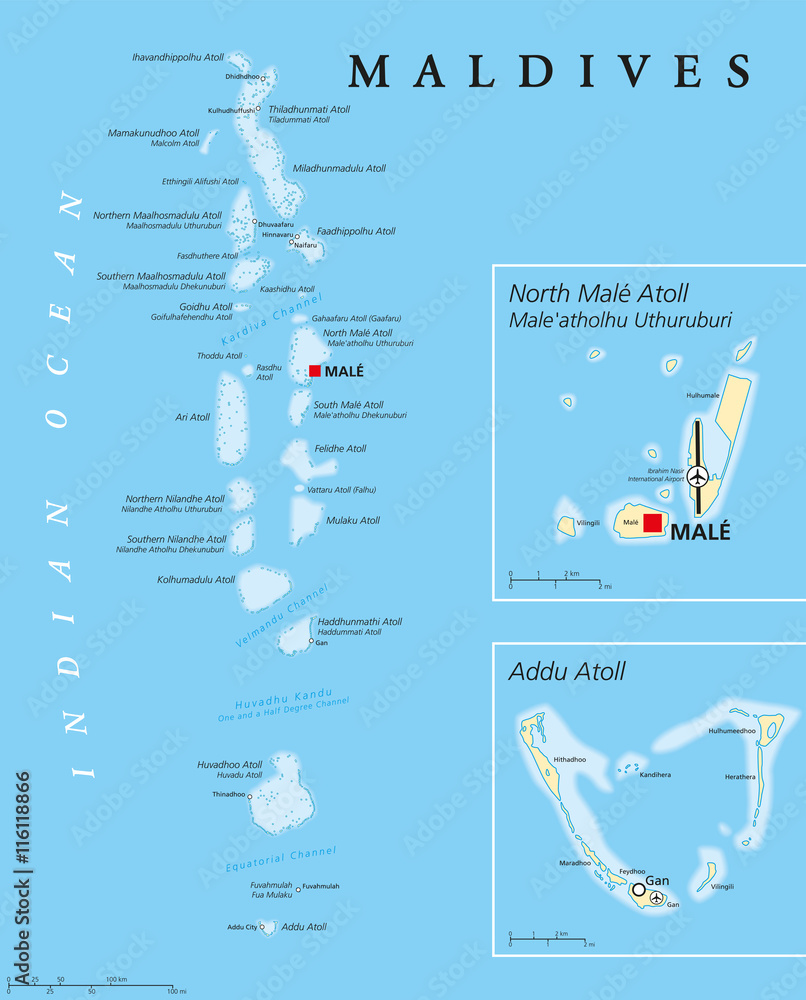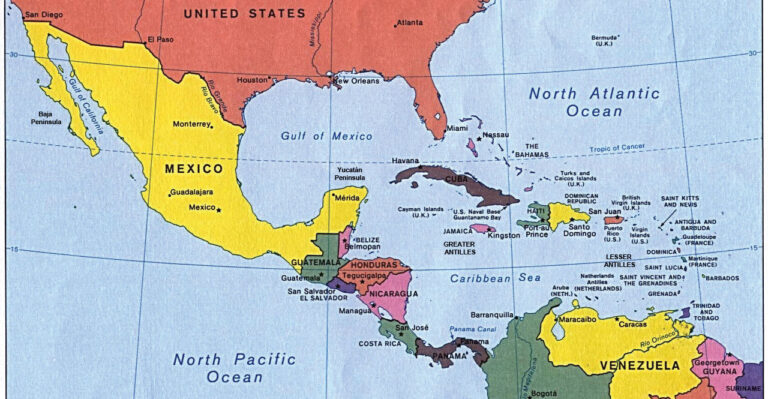Maldives Neighbouring Countries and Indian Ocean Islands

Geography of Maldives
Location and Setting
Ah, the Maldives! It’s cozied up in the Indian Ocean, the tiniest nation in all of Asia. Nestled just beneath India and Sri Lanka, it’s about a 750-kilometer hop away from the mainland. Now, what’s mind-blowing is the stretch—it covers a whopping 90,000 square kilometers with around 1,190 coral islands dotted like stars in a double chain across 26 atolls. It’s like a dream scattered over the ocean’s surface.
Unique Geographic Features
Here’s a fun fact: the Maldives barely peeks above sea level. At its highest, it’s just shy of 8 feet up, making it the flattest nation worldwide. Sitting on this submarine ridge stretching north to south, the Maldives sports a very unique landscape.
These coral islands are hotspots for some seriously colorful and lively underwater worlds. The atolls split into northern and southern chains, and thanks to some well-placed gaps, ships can glide smoothly through Maldivian waters, crisscrossing from one end of the Indian Ocean to the other.
| Geographic Attribute | Detail |
|---|---|
| Total Area | ~90,000 sq km |
| Number of Islands | ~1,190 |
| Number of Atolls | 26 |
| Elevation | < 8 feet |
With maritime borders hugging India and Sri Lanka, the Maldives holds a strategic passport to a prime spot in the Indian Ocean.
Feeling curious? Peek into the tales of nearby neighbors and their strategic sagas on our Luxembourg Neighbouring Countries and Madagascar Neighbouring Countries pages.
Territorial Boundaries
The Maldives, a stunning collection of 26 atolls, floats serenely in the Indian Ocean. Conveniently close to some notable neighbors, these buddies play a crucial role in shaping the Maldives’ international friendships.
Nearest Neighbors
The Maldives rubs sea elbows with two main pals: India and Sri Lanka. These countries offer a friendly hand not only in cultural festivities but also in business and strategic dealings.
India
India’s the Maldives’ closest chum, chilling just about 600 km to the northeast. They’re more than just neighbors—they’re besties in tourism and trade. India is a huge fan, sending loads of tourists to enjoy the sun-kissed beaches of the Maldives. This has created strong ties that are hard to ignore. Curious about their relationship adventures? Check out the inside scoop at India and Maldives Relations.
| Country | Distance from Maldives (km) | Best Buddies Through |
|---|---|---|
| India | 600 | Tourism, Trade |
| Sri Lanka | 750 | Cultural Vibes, Economic Links |
Sri Lanka
Sri Lanka is hanging out about 750 km to the north, with a rich history of cultural and economic bonding with the Maldives. Being close geographic buddies, they share more than just ocean waves. You wanna know more about their shared adventures? Sneak a peek at Sri Lanka and Maldives Relations.
India and Sri Lanka are more than just set menu neighbors for the Maldives—they’re key influencers. They shape how the Maldives dances on the international stage and steers its economic ship. If you’re keen to dive into the influence of borders, we’ve got more stories for you. Check out what’s brewing between Lithuania and its neighbors, the lowdown on Luxembourg’s buddies, or see what’s up with Madagascar’s connections.
Climate and Environment
Impact on Geography
So, imagine a place where you hop from one island to another like they’re stepping stones across the Indian Ocean. That’s the Maldives for ya! This collection of 1,192 coral islands forms an archipelago nestled into 26 atolls, giving it quite the postcard vibe. The whole shebang sprawls 871 kilometers from top to bottom and a good 130 kilometers across (Wikipedia). What makes the Maldives a one-of-a-kind splash is that it’s flatter than a pancake—sitting pretty on a submarine ridge with its highest point being a mere 2.4 meters (7 ft 10 in) above sea level.
This low-key landscape spells trouble since it leaves the country open to Mother Nature’s wrath, especially when it comes to rising sea levels. Coral reefs encircle these islands like protective guardians, fending off erosion and keeping the environment in check. But here’s the kicker—climate change, alongside human shenanigans like land-grabbing projects, is taking a toll on these undersea fortresses.
| What’s What | Details |
|---|---|
| Total Islands | 1,192 |
| Atolls | 26 |
| Longitudinal Stretch | 871 km (541 miles) |
| Latitudinal Stretch | 130 km (81 miles) |
| High Point | 2.4 meters (7 ft 10 in) |
Vulnerability to Climate Change
The Maldives stands in the front row when it comes to climate risks, almost like a movie star but with a far scarier script. Thanks to its pancake-flat geography, rising sea levels are like a bad guy lurking in the backdrop, threatening to wash it all away (Wikipedia). And there’s another villain in the plot: global warming, which is turning the heat up on the corals, affecting both the islands’ armor and its bustling sea life.
Turns out, the Maldives has been a bit slack about sticking to its own playbook on eco-rules and watching over those mammoth construction projects (Human Rights Watch). And then, there’s a 2008 study which floated the idea of packing up and moving folks to places like India, Sri Lanka, or Australia if things go haywire. Luckily, they have tourism dollars to possibly fuel such a mega move.
Why Worry? Let’s Break It Down:
- Rising Sea Levels: On shaky ground with its top perch just at 2.4 meters above the briny deep.
- Coral Reef Crisis: Warming waters and acid-driven action spell trouble for those seaside shields.
- Playing Fast and Loose with Rules: Spotty law-keeping and lackluster project watch-dogs mean the environment’s taking a beating.
Curious to explore more about how different countries are shaped and spread out? Check these out:
- Lithuania’s Neighbors
- Luxembourg Next Door
- Madagascar’s Closest Pals
- Malawi’s Surrounding Spots
- Malaysia’s Nearby Places
International Relations
The world keeps buzzing around the Maldives, thanks to its prime position in the Indian Ocean. Big shots like India and China are all over it, eager to leave their mark.
Influence of Countries
India and China are both playing a heavy game in the Maldives, each fighting to get an upper hand. India has pumped a lot into the Maldives through development loans, shiny new buildings, and military help (Carnegie Endowment). And let’s not forget those Indian tourists who boost local earnings big time; they made up 11% of the tourist crowd with more than 209,000 visits in 2023 (CNN).
China, on the other hand, is leaving its footprints with hefty economic investments as part of that big “Belt and Road” plan. This includes setting up ports and other projects across the Maldives (NBC News). But some folks are side-eying China’s moves, worried about falling into a debt trap with the giant’s economic push for its own interests.
Strategic Alliances
The Maldives is in the tricky position of juggling between keeping its autonomy and soaking up all the perks from foreign money and support. President Ibrahim Mohamed Solih seems to be swaying a bit more towards India, focusing on economic goodies and security (Carnegie Endowment). This strategy includes help from India during tough times, military cooperation, and aid across many areas, aligning with the “India First” approach.
Meanwhile, the political opposition, led by former President Abdulla Yameen Abdul Gayoom, argues for dialing back the close-knit ties with India to safeguard sovereignty. The opposition isn’t shy about wanting India’s military forces out, as seen in their “India Out” campaign.
Besides India and China, the Maldives enjoys a prime slice of the ocean pie with a vast economic zone of 923,322 square kilometers (Wikipedia). So, it’s no wonder the Maldives is a vital player in the broader Indo-Pacific area.
Numerical Data of Influence
| Country | Influence Type | Key Activities |
|---|---|---|
| India | Economic & Military | Development loans, infrastructure projects, military presence, tourism |
| China | Economic | “Belt and Road” initiative, infrastructure investments, potential debt risks |
This see-saw battle between India and China, along with deep-rooted historical and cultural links, weaves the Maldives’ approach to global relations. Interested in similar international dramas? Check out what’s happening in Malaysia, Mauritius, or Mauritania.
Economy Overview
Poverty and Development
The Maldives has taken giant steps toward slicing poverty rates, with reports from 2011 indicating less than a 1% poverty level. They’ve knocked out various health woes like starvation, slashed HIV rates, and kicked malaria to the curb. Still, economic growth is playing favorites; Malé, the capital city, is booming while many outlying islands face the struggle bus of poverty vulnerabilities.
Places far from Malé are riding the struggle train, facing roadblocks like limited production, wasted fishery potential, and farming that’s decades behind. They’re also a bit of a desert when it comes to land and water. Small producers and budding entrepreneurs there find it hard to nab any financial aid, choking off potential growth.
The Maldives government, buddying up with the United Nations Development Programme (UNDP), is tackling these issues head-on. They’ve rolled out plans to get everyone a piece of the national development pie, with a key focus on getting more women into the workforce.
| Indicator | Data |
|---|---|
| Poverty Rate (2011) | <1% |
| Gini Coefficient | 0.41 |
| Income in Malé vs. Surrounding Islands (1997-1998) | 75% higher in Malé |
Figures courtesy Wikipedia
Income Disparities
In the Maldives, the gap between the rich and the not-so-rich is wide enough to drive a truck through. The Gini coefficient, which is like a report card for income distribution, sits at 0.41. That’s a pretty big hint that not everyone’s raking it in equally. The widest gap yawns between the bustling Malé and the sleepier outer islands. Back in a 1997-1998 survey, folks in Malé were making 75% more dough than their islander counterparts.
Malé’s getting ahead with top-notch infrastructure, more job slots, and better access to social services compared to its secluded siblings. The outer islands are stuck with the short end of the stick, limited economic activities, and scarce investment which leaves a marked difference in living standards and economic success.
Bridging the income gap includes initiatives aimed at giving remote island folks a leg up. These efforts open doors to basic services, pump up job skills through training, and cheer on small business ventures.
Another angle of understanding these economic gaps is by checking out neighbors; look at related articles on how neighboring countries stack up economically, like those on Lithuania, Luxembourg, and Madagascar.
Cultural Ties
Historical Relationships
Once upon a time, the Maldives welcomed settlers from the Indian subcontinent, bringing with them bits of their own history and enriching what would eventually become a distinctive Maldivian culture. Their fascinating story of Buddhist heritage runs roughly 1,400 years deep and has painted the islands with unique scripts, architecture, and systems of governance that echo the past loud and clear. (Wikipedia)
India’s one of those neighbors that left a big mark. Their ties with the Maldives have been strong for what feels like forever. Ancient trade routes and cultural swaps have lent a hand in crafting Maldivian identity over the centuries.
Economic and Cultural Exchanges
Ever notice how some nations lean on each other a bit more than others? That’s Maldives and India. The bonds of trade, tourism, and healthcare run thick. India’s not just a buddy; it’s a backbone for the Maldivian economy, flooding its shores with tourists and aiding with medical support like vaccines. So when India coughs, the Maldives feels the tickle. (Carnegie Endowment)
Here’s how it breaks down with the Maldives’ neighbors:
| Neighboring Country | Key Jobs and Exchanges |
|---|---|
| India | Tourists, doctors, and trade partners much like family |
| Sri Lanka | Trading buddies and cultural pals |
| Bangladesh | Workforce and shared cultural vibes |
A little side trip—discover the neighbors of nations like Madagascar and Malawi.
The Maldives doesn’t just share an economical handshake with its neighbors; it’s a cultural swap meet. The back-and-forth doesn’t just keep wallets happy; it inspires everyday life, from how people design their homes to the festivals they celebrate. It’s a lively back-and-forth, continually weaving new threads into the Maldivian cultural tapestry.



